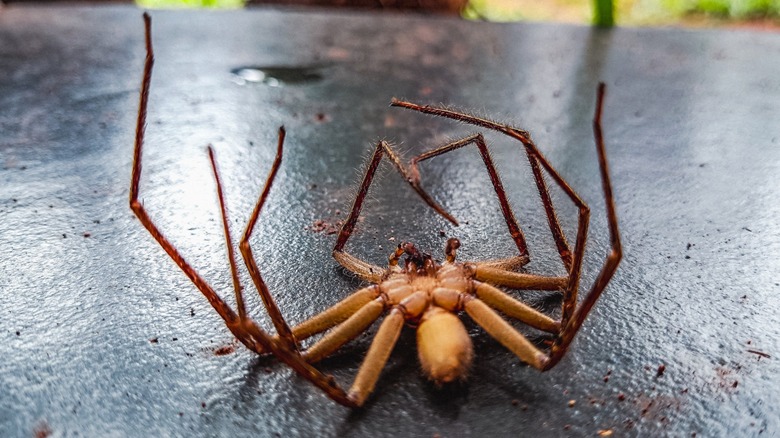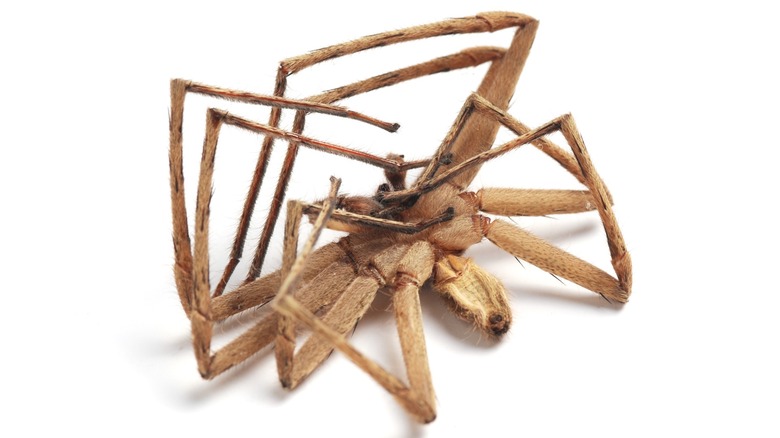Here's Why Spiders Curl Up When They Die
Spiders can be horrifying creatures to come into contact with, but they can also be very interesting to study. Case in point: When they die, their legs curl in toward their bodies. The interesting part of this reaction is that it happens because, rather than using muscles to stretch out their legs, arachnids depend on the pressurization of internal fluids.
The body of a spider is kind of like a hydraulic system that utilizes hemolymph pressure (the equivalent of blood pressure) to move its legs instead of extensor and flexor muscles like humans. That's because the joints in arachnid legs "only have flexor muscles," says Rice University graduate student Faye Yap in a statement while discussing a study about necrobotics published in Advanced Science. A hydraulic chamber near its head sends hemolymph fluid into its limbs when it contracts, forcing the legs to stretch out.
There are advantages and disadvantages of hydraulic systems like this, though. Since spider legs don't have extensor muscles, the flexor muscles can grow larger and more powerful. That gives them the ability to curl in their legs by reducing the pressure of hemolymph fluid so that arachnids can grip their prey tightly and climb practically anything. On the other hand, spiders lose control over their bodily fluids when they are dying (or have died). Without the hemolymph pressure in their legs, they curl inward to their bodies.
Why spiders end up on their backs when they die
Spiders of all kinds experience curled-in legs when they die, including common big spiders — like tarantulas and wolf spiders — and even the world's biggest spider species — the Goliath birdeater. If you've ever noticed that spiders are also laying on their backs when they die, though, there's a simple explanation. Rather than fall belly down and on top of its legs when it's dying, the laws of physics and gravity take over.
Everything has a center of mass, which is the point where the mass of a creature (or spider, in this case) is evenly distributed. Where this center of mass is located affects the balance and stability of the creature. For spiders, the cephalothorax (combined head and thorax) and abdomen are heavier than the thin legs that they walk on. As a result, gravity naturally pulls them onto their backs when their legs become weak from a lack of hemolymph fluid.
Healthy spiders that are turned onto their backs by some other means, such as being swatted away, can likely turn themselves upright again by flailing their legs. When they're weak and dying, however, spiders are unable to flip back onto their bellies. Because of that, they remain in that position with their legs curling inward.

